- June 5, 2023
Impact Of IlCV Vehicles On Transporation Infrastructure
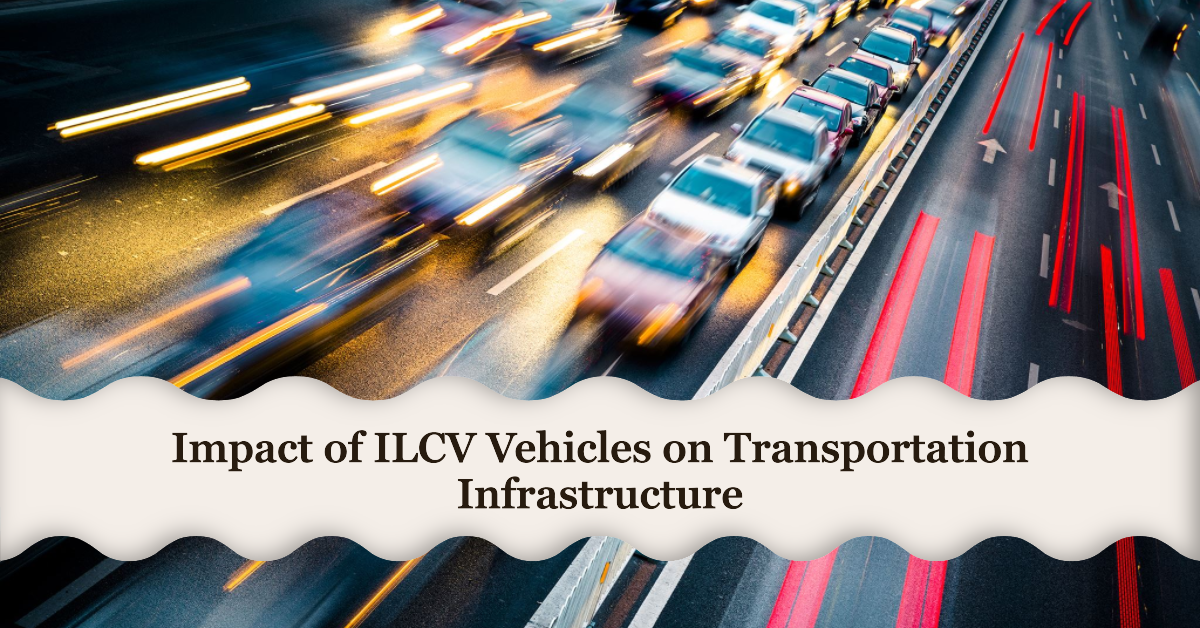
Assessing the Impact of ILCV Vehicles on Transportation Infrastructure
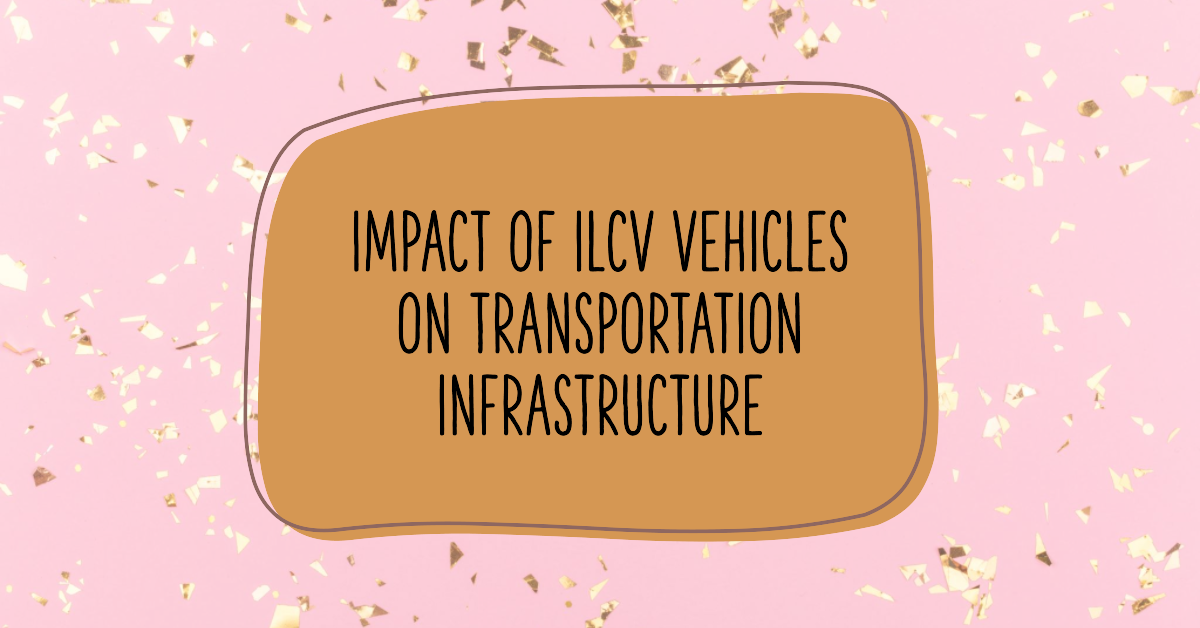
Introduction:
The growing trend of Intra-city Light Commercial Vehicles (ILCVs) and their impact on transportation infrastructure. This article aims to explore the various ways in which ILCVs influence urban transportation systems, discussing both positive and negative aspects. By understanding the potential consequences, policymakers and urban planners can make informed decisions to optimize infrastructure and ensure efficient and sustainable transportation networks.
So, in this article you will learn about the Impact Of IlCV Vehicles On all sectors like Transporation and Infrastructure.
1. Definition and Features of ILCV Vehicles:
In this section, we define Intra-city Light Commercial Vehicles (ILCVs) as a class of vehicles designed for goods transportation within urban areas. ILCVs typically have a gross vehicle weight rating (GVWR) ranging from 3.5 to 7.5 tons, making them smaller and more maneuverable than heavy-duty trucks. They possess the flexibility to navigate narrow streets, load and unload goods efficiently, and are often used for last-mile deliveries.
2. Positive Impacts of ILCVs on Transportation Infrastructure:
Highlighting the positive effects ILCVs have on transportation infrastructure, such as:
2.1 Reduced Traffic Congestion: ILCVs offer smaller footprints, allowing them to navigate congested areas more easily. They contribute to reducing traffic congestion by efficiently delivering goods, as opposed to larger trucks that occupy more space.
2.2 Improved Air Quality: Compared to traditional diesel-powered trucks, ILCVs often utilize cleaner fuel sources or electric powertrains, resulting in reduced emissions and improved air quality within urban areas.
2.3 Last-Mile Delivery Efficiency: ILCVs excel at last-mile deliveries due to their size and agility. By optimizing routes and minimizing travel distances, they enhance delivery efficiency, reducing the number of vehicles required for the same task.
3. Negative Impacts of ILCVs on Transportation Infrastructure:
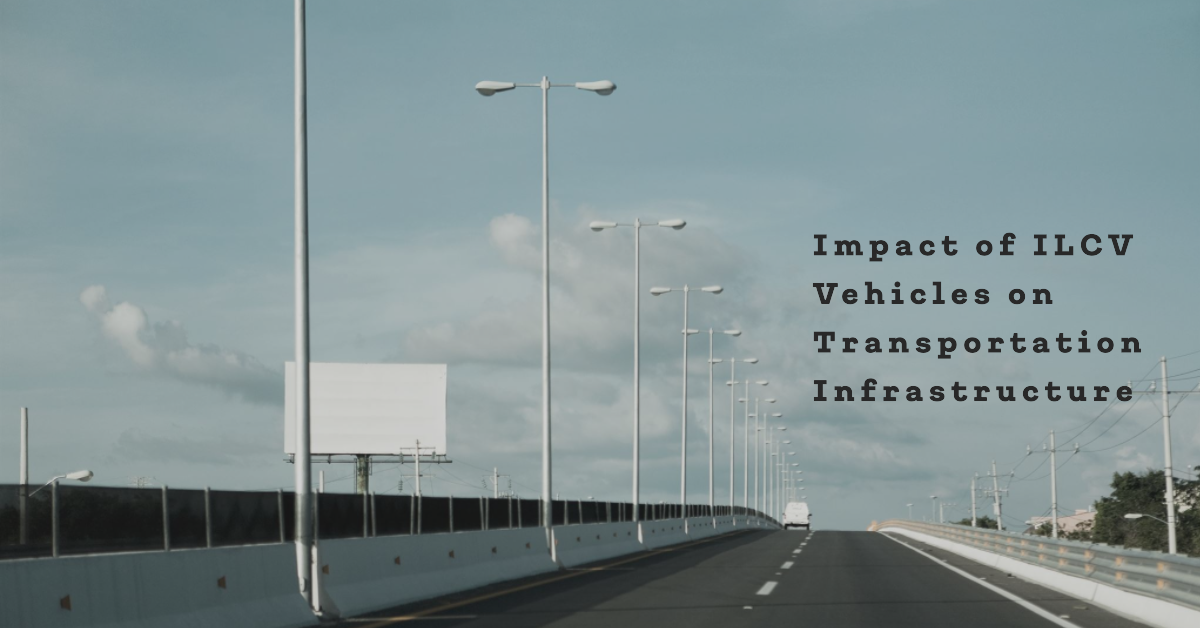
Examining the negative impacts of ILCVs on transportation infrastructure, including:
3.1 Road Degradation: Although ILCVs are smaller, their increased numbers can lead to excessive wear and tear on roads, especially if the infrastructure is not designed to accommodate a higher volume of commercial vehicles.
3.2 Parking and Loading Challenges: The rise in ILCVs necessitates dedicated parking and loading spaces, which can strain existing infrastructure. Insufficient parking facilities and loading zones may lead to illegal parking, hindering traffic flow and pedestrian movement.
3.3 Safety Concerns: As ILCVs operate in dense urban areas, their presence can potentially increase the risk of accidents, especially if drivers are unfamiliar with city driving conditions. Urban planners must consider appropriate safety measures and road design to mitigate these risks.
4. Infrastructure Adaptation and Optimization:
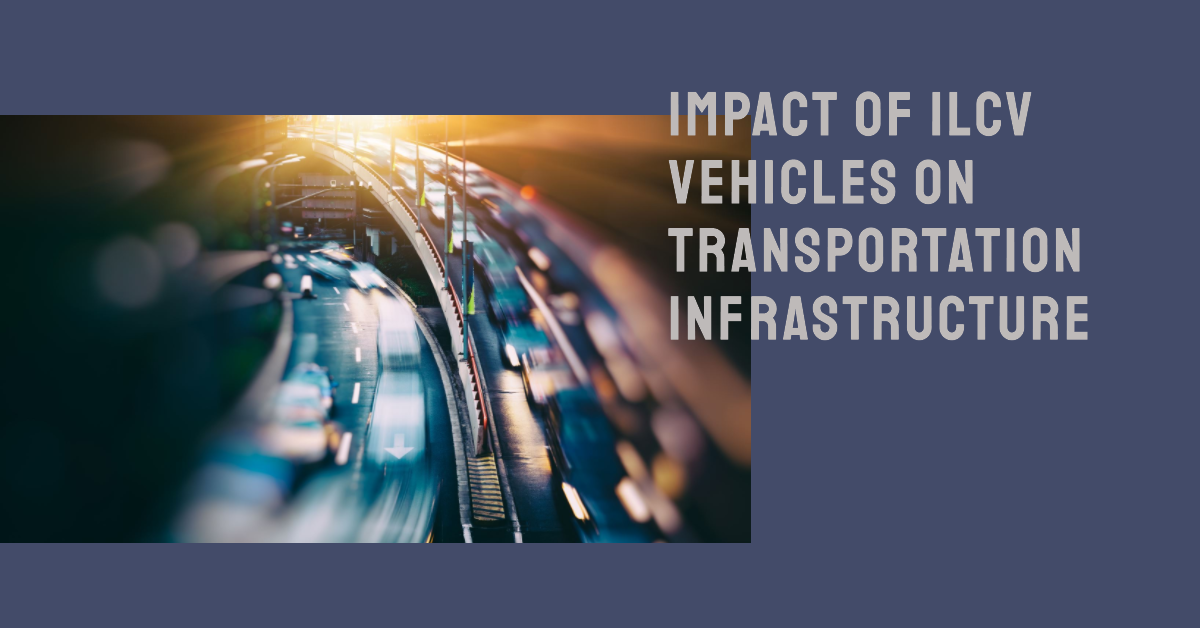
Exploring strategies to adapt and optimize transportation infrastructure for ILCVs:
4.1 Road Design and Maintenance: Urban planners should consider the increased demand from ILCVs when designing and maintaining roads. This involves strengthening road surfaces, widening intersections, and improving the load-bearing capacity of bridges to accommodate the heavier vehicles.
4.2 Dedicated Loading and Unloading Zones: Allocating specific areas for ILCVs to load and unload goods can alleviate parking and traffic congestion issues. These zones should be strategically located and equipped with proper infrastructure to facilitate efficient operations.
4.3 Intelligent Transportation Systems (ITS): Implementing ITS technologies, such as smart traffic signals and real-time traffic monitoring systems, can optimize traffic flow, minimize congestion, and improve overall transportation efficiency for ILCVs and other vehicles.
Energy efficiency and sustainability of ilcv vehicles
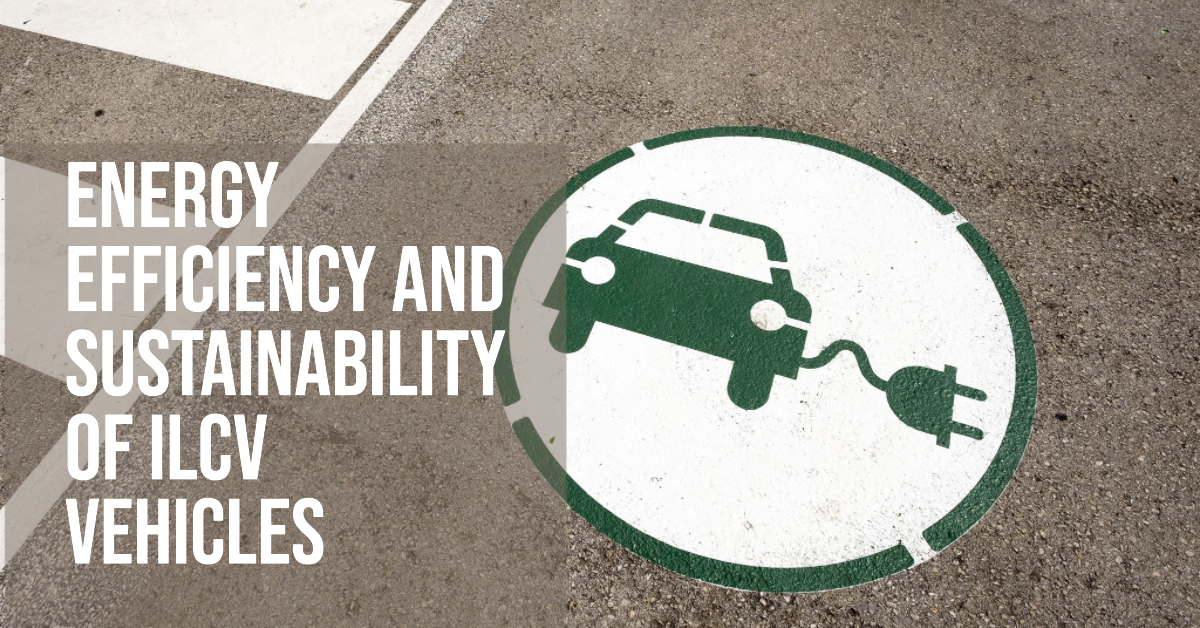
I. Understanding Energy Efficiency:
1.1 Definition of Energy Efficiency Energy efficiency refers to the ability of a vehicle to achieve maximum performance with minimum energy consumption. It measures the utilization of energy in propelling the vehicle and performing its intended functions.
1.2 Evaluating Energy Efficiency Assessing energy efficiency involves various parameters and indicators, such as:
a) Fuel Economy: Calculating the vehicle’s miles per gallon (MPG) or liters per 100 kilometers (L/100km) provides a baseline for comparing different models and technologies.
b) Engine Efficiency: Evaluating the engine’s thermal efficiency, power output, and combustion characteristics helps determine the effectiveness of energy conversion.
c) Aerodynamics: Optimizing the vehicle’s design to minimize air resistance and drag can significantly enhance energy efficiency.
d) Weight Reduction: Reducing vehicle weight through lightweight materials and efficient designs improves fuel efficiency by reducing energy requirements.
II. Promoting Sustainability in ILCV Vehicles:
2.1 Definition of Sustainability in Vehicles Sustainability encompasses various aspects, including reducing environmental impacts, promoting resource efficiency, and considering social and economic factors throughout a vehicle’s life cycle.
2.2 Life Cycle Assessment (LCA) LCA evaluates a vehicle’s sustainability by considering its entire life cycle, including manufacturing, operation, and end-of-life disposal. It quantifies environmental impacts, energy consumption, and resource depletion, enabling better decision-making.
2.3 Emissions and Pollution Reduction a) Exhaust Emissions: Measuring and controlling tailpipe emissions, such as carbon dioxide (CO2), nitrogen oxides (NOx), and particulate matter, contribute to a cleaner and more sustainable vehicle. b) Electric and Hybrid Technologies: Introducing electric and hybrid powertrain options can significantly reduce emissions and dependence on fossil fuels.
2.4 Alternative Fuels and Energy Sources Exploring and adopting alternative fuels like biodiesel, hydrogen, and natural gas, as well as renewable energy sources, such as solar and wind, are critical steps toward sustainability in ILCV vehicles.
III. Strategies for Enhancing Efficiency and Sustainability:
3.1 Advanced Technologies
a) Engine Technologies: Employing technologies like direct injection, turbocharging, and variable valve timing can enhance combustion efficiency and reduce fuel consumption.
b) Hybridization: Combining internal combustion engines with electric powertrains allows for energy recovery during deceleration and lower fuel consumption during low-load operations. c) Lightweight Materials: Utilizing lightweight materials like aluminum and advanced composites reduces the vehicle’s weight, improving energy efficiency.
3.2 Driver Training and Behavior Promoting eco-driving practices, such as smooth acceleration, minimizing idling, and maintaining proper tire pressure, can have a significant impact on energy efficiency.
3.3 Infrastructure and Support Developing charging infrastructure for electric vehicles and incentivizing sustainable transportation through tax credits and subsidies helps accelerate the adoption of energy-efficient ILCV vehicles.
Safety considerations in ilcv vehicles:
1. Vehicle Design and Structural Integrity:
The foundation of safety in ILCV vehicles lies in their design and structural integrity. Manufacturers must adhere to stringent regulations and standards, including crashworthiness and rollover protection. Robust chassis construction and reinforced body frames are essential to minimize the risk of severe injuries in the event of an accident. Additionally, advanced safety features such as crumple zones, side impact protection, and energy-absorbing materials can enhance occupant safety.
2. Collision Avoidance Systems:
ILCV vehicles should be equipped with cutting-edge collision avoidance systems that leverage technologies such as radar, lidar, and cameras. These systems provide real-time monitoring of the vehicle’s surroundings, enabling early detection of potential hazards. Forward collision warning systems, lane departure warning systems, and blind-spot monitoring are vital components that contribute to preventing accidents. Moreover, automatic emergency braking systems can intervene to mitigate or avoid collisions, further safeguarding the vehicle occupants and other road users.
3. Driver Assistance Technologies:
ILCVs can benefit from driver assistance technologies that augment the capabilities of human drivers. Adaptive cruise control, for instance, helps maintain a safe distance from vehicles ahead, reducing the risk of rear-end collisions. Lane-keeping assist systems assist drivers in staying within their designated lanes, mitigating the chances of unintentional lane departures. These technologies, coupled with comprehensive driver training programs, promote safe driving habits and reduce human errors that often lead to accidents.
4. Cybersecurity and Data Privacy:
As ILCVs become increasingly connected and rely on data transmission, ensuring robust cybersecurity measures is critical. Manufacturers must prioritize the implementation of secure communication protocols, encryption, and authentication mechanisms to protect vehicles from unauthorized access and potential cyber threats. Additionally, stringent data privacy policies should be in place to safeguard sensitive information collected by ILCV systems. Regular software updates and collaboration with cybersecurity experts are essential to staying ahead of emerging threats.
5. Emergency Response and Rescue Procedures:
In the event of an accident involving ILCV vehicles, efficient emergency response and rescue procedures are vital. Emergency service providers should be equipped with the necessary training and tools to handle incidents involving advanced technologies. Clear guidelines for securing high-voltage systems, extricating occupants safely, and handling hazardous materials specific to ILCVs must be developed. Collaboration between manufacturers, emergency services, and regulatory bodies can facilitate the establishment of standardized procedures that enhance the effectiveness of emergency response efforts.
Design and Optimization of ILCV Vehicle Architectures:
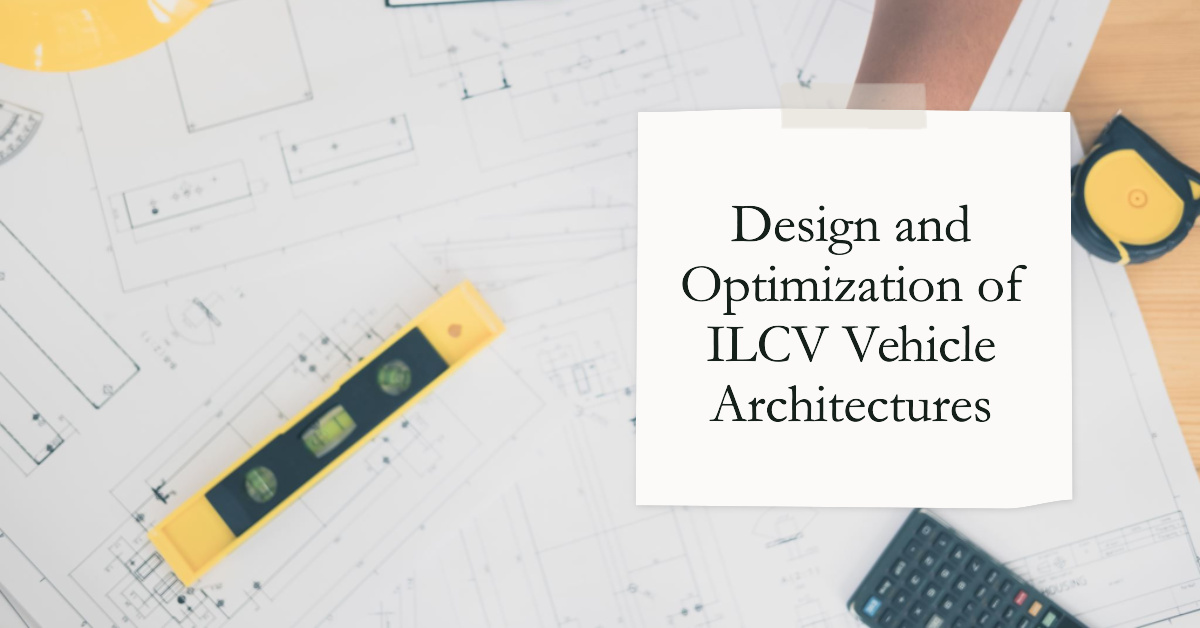
1. Weight Reduction Strategies:
One of the primary goals in designing ILCV architectures is weight reduction. By incorporating lightweight materials such as high-strength steel, aluminum alloys, and composites, manufacturers can significantly reduce the vehicle’s overall weight. Advanced engineering techniques, such as topology optimization and structural analysis, can aid in identifying areas where weight reduction is possible without compromising safety and durability. Moreover, employing efficient manufacturing processes like additive manufacturing can further reduce weight by eliminating excess material and enabling complex geometries.
2. Aerodynamic Optimization:
Aerodynamics plays a vital role in improving the efficiency of ILCVs. By reducing drag forces, manufacturers can enhance fuel economy and decrease carbon emissions. Optimizing the vehicle’s shape through wind tunnel testing and computational fluid dynamics (CFD) simulations allows designers to streamline the airflow around the vehicle. This can be achieved by incorporating features such as streamlined body panels, integrated fairings, and aerodynamic spoilers. Additionally, optimizing the underbody airflow, reducing turbulence, and minimizing air leakage around gaps and joints are crucial for enhancing aerodynamic performance.
3. Powertrain Optimization:
Efficient powertrain optimization is essential to improve the overall performance of ILCVs. Incorporating hybrid or electric powertrains can significantly reduce fuel consumption and emissions. Advanced energy storage systems, such as lithium-ion batteries, coupled with regenerative braking systems, can capture and reuse energy during deceleration. Furthermore, optimizing the powertrain control algorithms and integrating advanced sensors and control systems enable better energy management and enhance overall drivetrain efficiency. Efficient powertrain design and integration can also contribute to weight reduction and improved vehicle dynamics.
4. Advanced Vehicle Control Systems:
Incorporating advanced vehicle control systems can enhance the safety and efficiency of ILCVs. Technologies like adaptive cruise control, lane-keeping assist, and collision mitigation systems help in reducing accidents and improving fuel economy. Additionally, optimizing the vehicle’s electronic
control unit (ECU) algorithms and integrating sensor fusion techniques enable real-time monitoring and control of various vehicle parameters. This allows for predictive maintenance, optimal energy management, and intelligent vehicle-to-vehicle communication, leading to improved overall vehicle performance.
Challenges and Opportunities ILCV Vehicle Development:
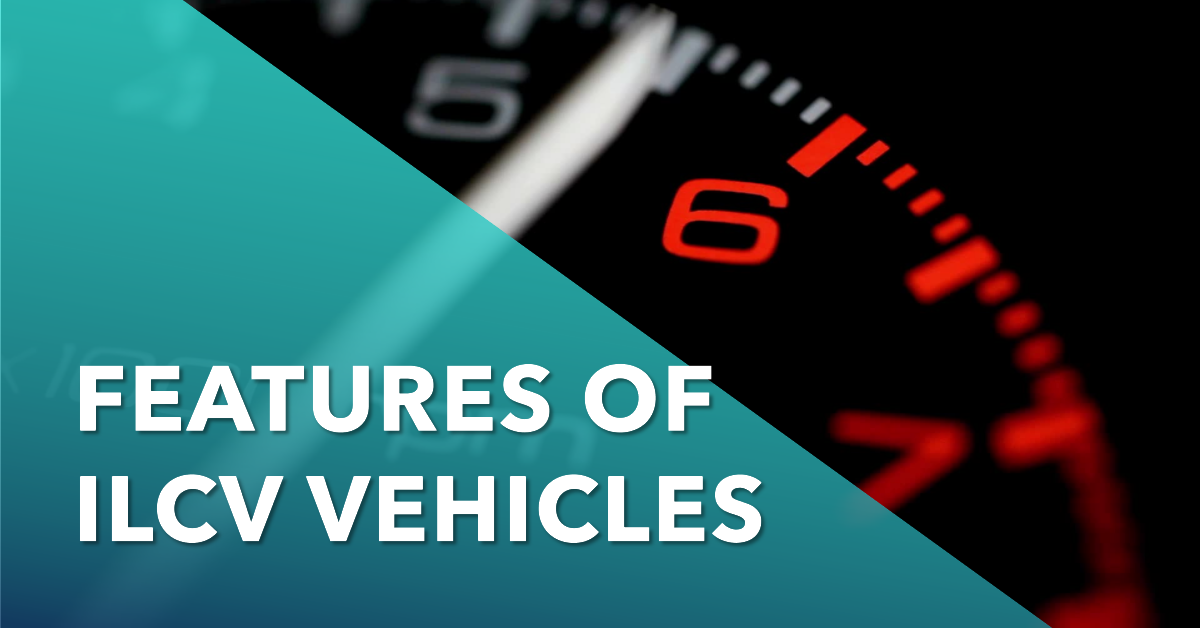
I. Regulatory Compliance and Emission Standards:
One of the primary challenges in ILCV vehicle development is ensuring compliance with stringent regulatory and emission standards. Governments worldwide are placing increasing emphasis on reducing greenhouse gas emissions and promoting sustainable transportation. This necessitates the integration of advanced emission control systems, hybrid or electric drivetrains, and improved fuel efficiency technologies into ILCVs. While meeting these standards poses a challenge, it also presents an opportunity for manufacturers to differentiate themselves by developing innovative solutions that exceed regulatory requirements.
II. Weight Optimization and Payload Capacity:
ILCVs are designed to transport goods efficiently, making weight optimization a critical factor. Reducing the vehicle’s weight while maintaining structural integrity poses a challenge for engineers. New materials, such as lightweight alloys and composites, offer opportunities to enhance vehicle performance while increasing payload capacity. Additionally, advanced design and simulation tools can aid in optimizing the vehicle’s load-bearing capabilities, ensuring maximum payload efficiency.
III. Safety and Driver Assistance Systems:
Safety remains a top priority in vehicle development. ILCVs, with their role in transporting goods and operating in urban environments, require robust safety features. Challenges arise in developing advanced driver assistance systems (ADAS) tailored for commercial vehicles, including collision avoidance systems, blind-spot detection, and lane-keeping assistance. Integrating these technologies while considering cost-effectiveness and durability is a complex task. However, addressing these challenges provides an opportunity to enhance overall road safety and improve the efficiency and productivity of commercial vehicle operations.
Advances in ILCV Vehicle Control Systems:

1 Advanced Driver Assistance Systems (ADAS):
. ADAS is a fundamental component of IVCS, aimed at improving road safety and reducing accidents. Recent advancements in ADAS have made vehicles more aware of their surroundings, enabling them to assist drivers in various ways. Some notable features of ADAS include:
1.1 Collision Avoidance Systems Sophisticated sensors, such as radar, lidar, and cameras, enable vehicles to detect potential collisions and take preventive measures. These systems employ techniques like automatic emergency braking and lane departure warning to minimize the risk of accidents.
1.2 Adaptive Cruise Control (ACC) ACC utilizes sensors to maintain a safe distance from the vehicle ahead, automatically adjusting the speed to match the traffic flow. This feature reduces driver fatigue and optimizes fuel efficiency.
1.3 Blind Spot Monitoring By using sensors to detect vehicles in blind spots, this technology provides drivers with warnings or visual cues to prevent unsafe lane changes.
2. Autonomous Driving:
Autonomous driving represents the pinnacle of IVCS development, promising a future where vehicles can operate without human intervention. While fully autonomous vehicles are not yet commonplace, significant strides have been made in this field. Here are some notable advancements:
2.1 Sensor Fusion Autonomous vehicles rely on a combination of sensors, including cameras, radar, lidar, and GPS, to perceive and interpret their environment. Sensor fusion algorithms
integrate data from these sources to create a comprehensive understanding of the vehicle’s surroundings, enhancing safety and decision-making capabilities.
2.2 Machine Learning and Artificial Intelligence (AI) Machine learning and AI techniques play a crucial role in autonomous driving. These technologies enable vehicles to learn from vast amounts of data and make intelligent decisions in real-time. AI algorithms are employed for tasks such as object recognition, path planning, and behavior prediction.
2.3 High-definition Mapping Accurate and detailed maps are essential for autonomous vehicles to navigate complex environments. High-definition maps provide information on lane markings, traffic signs, and road geometry, enhancing the vehicle’s situational awareness.
3. Vehicle-to-Vehicle (V2V) Communication:
V2V communication enables vehicles to exchange data with each other, enhancing safety, and enabling cooperative driving. Recent advances in V2V technology include:
3.1 Cooperative Collision Warning By sharing real-time information about their positions, speeds, and trajectories, vehicles can warn each other about potential collisions, reducing the likelihood of accidents.
3.2 Platooning Platooning involves a group of vehicles traveling closely together, connected through V2V communication. This formation improves traffic flow and fuel efficiency, as vehicles can synchronize their movements and maintain optimal spacing.
4. Cybersecurity:
As vehicles become increasingly connected and autonomous, ensuring their cybersecurity is paramount. Recent advances in IVCS include robust cybersecurity measures:
4.1 Intrusion Detection Systems Sophisticated algorithms monitor the vehicle’s network for any suspicious activities, promptly alerting the driver or initiating countermeasures to prevent cyber-attacks.
4.2 Secure Over-The-Air (OTA) Updates OTA updates allow manufacturers to remotely deliver software patches and security enhancements to vehicles. This ensures that vehicles remain protected against emerging threats.
Real-Time Object Detection and Tracking in ILCV Vehicles:
1. Understanding Object Detection:
Object detection refers to the process of identifying and localizing specific objects within an image or a video stream. In the context of ILCV vehicles, object detection enables the vehicle’s perception system to identify various objects in its environment, such as pedestrians, vehicles, traffic signs, and obstacles. This information is crucial for the vehicle to make informed decisions, plan its trajectory, and react appropriately to potential hazards.
2. Key Components of Real-Time Object Detection and Tracking:
2.1 Sensors: ILCV vehicles are equipped with a variety of sensors, including cameras, LiDAR (Light Detection and Ranging), radar, and ultrasonic sensors. These sensors capture data about the surrounding environment, providing crucial inputs for object detection and tracking algorithms.
2.2 Deep Learning and Computer Vision: Deep learning techniques, especially convolutional neural networks (CNNs), have revolutionized object detection and tracking. CNN-based architectures, such as YOLO (You Only Look Once) and SSD (Single Shot MultiBox Detector), have shown remarkable accuracy and speed in real-time object detection tasks. These algorithms leverage large-scale annotated datasets to learn the representations and spatial relationships of objects, enabling them to detect and track objects with high precision.
2.3 Data Fusion: To enhance object detection and tracking performance, data fusion techniques are used to combine information from multiple sensors. By integrating data from cameras, LiDAR, and radar, ILCV vehicles can achieve robust object detection and tracking in various environmental conditions.
3. Challenges and Solutions in Real-Time Object Detection and Tracking:
3.1 Occlusion and Clutter: Objects in the real world often occlude or partially overlap with each other, leading to challenges in accurate detection and tracking. Advanced algorithms employ techniques like multi-object tracking and re-identification to handle occlusion and maintain the identity of objects even when temporarily hidden from view.
3.2 Real-Time Processing: Real-time object detection and tracking require efficient algorithms and hardware acceleration to process large amounts of data within strict time constraints. Techniques like model compression, quantization, and parallel computing enable real-time performance on embedded systems used in ILCV vehicles.
3.3 Adverse Weather Conditions: Poor weather conditions, such as rain, fog, or snow, can significantly affect the accuracy of object detection systems. To mitigate this challenge, sensor fusion techniques can combine data from different sensors to compensate for the limitations of individual sensors in adverse weather conditions.
Human Factors and user Experience in ILCV vehicles:
1. Ergonomic Design:
Ergonomic design focuses on creating vehicles that are comfortable and efficient for drivers and passengers. In the case of ILCVs, it is essential to consider the specific tasks and requirements of commercial drivers. Key considerations include:
a. Driver’s Workspace: Design the cabin layout to provide ample space for the driver’s movements and operation of controls. Optimize the position and accessibility of instruments, switches, and displays.
b. Seat Comfort: Prioritize comfortable seating with adjustable features to accommodate various body types and provide adequate lumbar support. Consider vibration and shock absorption for long-haul journeys.
c. Visibility and Sightlines: Optimize window design, mirror placement, and blind spot reduction to enhance visibility, enabling the driver to have a clear view of the surroundings.
2. Intuitive Controls and Interfaces:
User-friendly controls and interfaces contribute significantly to the overall user experience. ILCV manufacturers can improve user satisfaction by implementing:
a. Minimal Cognitive Load: Simplify the control layout by grouping related functions and reducing the number of buttons and switches. Intuitive placement and labeling enhance ease of use.
b. Haptic and Auditory Feedback: Provide tactile feedback and audible cues to assist drivers in navigating controls without visual distractions. Well-designed feedback mechanisms increase confidence and reduce errors.
c. Multifunctional Displays: Utilize clear and well-organized graphical interfaces that display relevant information such as vehicle status, fuel levels, navigation, and diagnostics. Customizable displays allow drivers to personalize their experience.
3. Advanced Driver-Assistance Systems:
Advanced driver-assistance systems (ADAS) enhance safety, efficiency, and convenience in ILCVs. By integrating intelligent technologies, user experience can be greatly improved:
a. Collision Avoidance: Implement systems such as forward collision warning, blind spot detection, and lane departure warning to alert drivers of potential hazards and prevent accidents.
b. Adaptive Cruise Control: Incorporate intelligent cruise control systems that adjust the vehicle’s speed and maintain safe distances from surrounding vehicles, reducing driver fatigue and increasing comfort.
c. Parking Assistance: Provide automated parking assistance features, including parking sensors and rear-view cameras, to facilitate parking in tight spaces and reduce the stress associated with maneuvering large vehicles.
4. Comfort and Connectivity:
Enhancing comfort and connectivity features within ILCVs contributes to a positive user experience and increased productivity:
a. Climate Control: Incorporate efficient heating, ventilation, and air conditioning systems that ensure a comfortable cabin environment for drivers and passengers in varying weather conditions.
b. Infotainment Systems: Integrate user-friendly infotainment interfaces that allow drivers to access entertainment, navigation, and communication features without distractions. Voice commands and steering wheel controls enhance ease of use.
c. Connectivity: Provide seamless integration with mobile devices, enabling drivers to access hands-free calling, music streaming, and real-time traffic updates. Connectivity features enhance productivity and minimize distractions
Social acceptance and public perception of ilcv vehicles:
1. Environmental Awareness and Concerns:
One of the primary drivers of social acceptance for ILCVs is the growing environmental awareness and concerns among the public. As individuals become increasingly conscious of climate change and air pollution, there is a greater appreciation for clean and sustainable transportation alternatives. Communicating the environmental benefits of ILCVs, such as reduced carbon emissions and improved air quality, can help garner positive public perception and acceptance.
2. Infrastructure Development:
A critical factor influencing public perception of ILCVs is the availability and accessibility of necessary infrastructure, such as charging stations and repair facilities. The public needs reassurance that charging an electric ILCV will be as convenient and widespread as refueling a traditional vehicle. Governments, in collaboration with industry stakeholders, must invest in the development of charging infrastructure to address range anxiety and encourage the adoption of ILCVs. A well-established network of charging stations and service centers will instill confidence in consumers and contribute to positive public perception.
3. Economic Considerations:
Public perception of ILCVs is closely tied to economic considerations. The initial cost of acquiring an ILCV, as well as the total cost of ownership, including maintenance and charging expenses, are essential factors that affect consumer choices. Governments can incentivize the adoption of ILCVs through financial incentives, such as tax credits and subsidies. Transparent communication regarding long-term cost savings, reduced fuel expenses, and potential benefits for businesses can help shift public perception towards ILCVs as economically viable options.
4. Safety and Performance:
ILCV manufacturers must address concerns regarding safety and performance to gain social acceptance. Public perception relies heavily on the perceived safety of new vehicle technologies. Clear communication about safety features, crash test ratings, and reliability can alleviate fears and build trust in ILCVs. Performance aspects such as range, cargo capacity, and towing capabilities also
influence public perception. Demonstrating that ILCVs can meet or exceed the performance expectations of traditional vehicles will contribute to their acceptance.
5. Education and Awareness Campaigns:
Educating the public about the benefits and technology behind ILCVs is crucial for fostering social acceptance. Government agencies, automakers, and environmental organizations should collaborate on comprehensive awareness campaigns to dispel myths and misconceptions. Providing accurate information about ILCVs’ range, charging times, and environmental impact can address common concerns and build trust. These campaigns should also highlight success stories and testimonials from early adopters, showcasing the positive experiences of using ILCVs to further enhance public perception.
Legal and Regulatory Frameworks for ILCV Vehicle Operations:
I. Understanding the Legal Landscape:
1.1. National and Regional Laws: Different countries and regions have varying legal frameworks governing ILCV operations. It is essential to familiarize yourself with the relevant national and regional laws that pertain to autonomous vehicles, road safety, and transportation regulations. This understanding will enable you to comply with the specific requirements applicable to ILCVs in your operating jurisdiction.
1.2. Licensing and Permits: Certain licenses and permits may be required to operate ILCVs legally. These could include autonomous vehicle testing permits, commercial vehicle operator licenses, or special permits for operating connected vehicles. Consult with local transportation authorities to determine the specific licensing and permit requirements for ILCV operations.
II. Compliance with Safety Standards:
2.1. Vehicle Safety Regulations: ILCVs must adhere to established safety standards to ensure the protection of passengers, pedestrians, and other road users. Familiarize yourself with safety regulations specific to ILCVs, including crashworthiness standards, collision avoidance systems, and emergency response protocols. Compliance with these standards is essential to mitigate risks and maintain public trust.
2.2. Cybersecurity and Data Privacy: Given the advanced connectivity of ILCVs, cybersecurity and data privacy are critical considerations. Implement robust cybersecurity measures to safeguard against potential hacking threats and protect sensitive data transmitted within the vehicle network. Adhere to data protection laws and privacy regulations when collecting, storing, and processing data obtained from ILCV operations.
III. Liability and Insurance:
3.1. Product Liability: Manufacturers and operators of ILCVs may face liability issues in the event of accidents or malfunctions. It is crucial to understand the legal framework surrounding product liability, including the allocation of responsibility between the vehicle manufacturer, software developers, and operators. Consult legal experts to ensure compliance and mitigate potential liabilities.
3.2. Insurance Coverage: Insurance policies tailored for ILCVs are necessary to address the unique risks associated with their operations. Engage with insurance providers specializing in autonomous vehicles to secure comprehensive coverage that protects against potential accidents, property damage, and data breaches. Work closely with legal and insurance professionals to assess coverage requirements and ensure compliance with applicable regulations.
IV. Data Sharing and Privacy:
4.1. Compliance with Data Protection Regulations: ILCVs generate vast amounts of data that can be used to improve vehicle performance and optimize transportation systems. However, data collection, storage, and sharing practices must comply with relevant data protection regulations. Understand the requirements of data protection laws, such as obtaining informed consent for data collection, anonymizing personally identifiable information, and establishing data usage policies.
4.2. Collaboration with Stakeholders:
Collaboration with stakeholders, including government agencies, transportation authorities, and other industry participants, is essential to navigate the legal and regulatory landscape effectively. Engage in dialogues to discuss best practices, address concerns, and work towards the development of industry standards that foster responsible ILCV operations.
Collaborative Perception and Communication in ILCV Vehicle Networks
I. Collaborative Perception in ILCV Networks:
1. Definition and Importance of Collaborative Perception: a. Collaborative perception refers to the ability of vehicles within a network to share sensor data and collectively perceive the environment. b. It enhances situational awareness, object detection, tracking, and scene understanding, leading to improved safety and decision-making capabilities.
2. Sensor Fusion: a. Sensor fusion combines data from various sensors (e.g., cameras, LiDAR, radar) to obtain a comprehensive understanding of the surroundings. b. Fusion algorithms leverage the collective perception of multiple vehicles to generate more accurate and reliable results.
3. Cooperative Localization: a. Cooperative localization techniques allow vehicles to determine their positions accurately by exchanging sensor data. b. By sharing information, vehicles can overcome challenges such as GPS signal loss or unreliable sensor measurements.
4. Collaborative Mapping: a. Collaborative mapping enables the creation and sharing of high-definition maps in real-time. b. Vehicles can contribute to the map database, providing up-to-date information about road conditions, obstacles, and traffic flow.
II. Collaborative Communication in ILCV Networks:
5. Vehicular Ad-Hoc Networks (VANETs): a. VANETs facilitate communication among vehicles and with roadside infrastructure, forming the backbone of collaborative communication. b. Dedicated short-range communication (DSRC) and cellular vehicle-to-everything (C-V2X) technologies enable reliable and low-latency data exchange.
6. Cooperative Awareness Messages (CAM): a. CAMs allow vehicles to exchange information about their status, such as position, speed, acceleration, and heading. b. This information enables cooperative maneuvers, cooperative perception, and cooperative collision avoidance.
7. Decentralized Data Processing: a. In ILCV networks, data processing can be decentralized, with vehicles performing localized computations. b. This approach
reduces the reliance on centralized infrastructure, enhances scalability, and improves system robustness.
8. Security and Privacy Challenges: a. Collaborative communication raises concerns regarding data security and privacy. b. Measures such as authentication, encryption, and access control must be implemented to protect sensitive information and prevent malicious attacks.
Conclusion:
Collaborative perception and communication are essential elements in the development of Intelligent Large Commercial Vehicle (ILCV) networks. By leveraging collaborative perception, vehicles can achieve a comprehensive understanding of their surroundings, enabling improved safety and decision-making. Collaborative communication, on the other hand, ensures efficient data exchange among vehicles, facilitating cooperative maneuvers and advanced applications. Despite the numerous benefits, challenges related to sensor fusion, localization, data processing, and security must be addressed for successful implementation. By addressing these challenges, the vision of intelligent transportation systems can be realized, revolutionizing the way we travel and interact with vehicles on the road.
